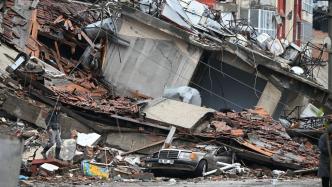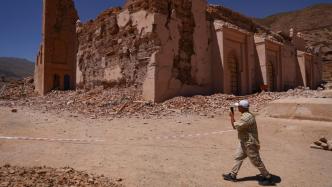
Recently, a 6.9-magnitude earthquake struck Morocco, the largest earthquake in Morocco in 120 years. The number of victims has reached more than 2,900. In addition to casualties and economic losses, the earthquake's damage to Morocco's civilized monuments will have a more profound impact. According to UNESCO statistics, many world cultural heritage sites in Morocco have been damaged by the earthquake, especially in Marrakech and the surrounding Ouarzazate and Hauz provinces, which are relatively close to the epicenter. Some monuments have been completely destroyed.
Morocco is located at the junction of Europe and Africa and has preserved many ancient human civilizations. A total of 9 monuments have been listed as World Cultural Heritage by the United Nations. Among the ruins of the earthquake are Morocco's fascinating art gardens and cultural labyrinth.
Shattered monuments
The last major earthquake in Morocco was the Agadir earthquake more than 60 years ago. This earthquake was not only stronger in magnitude, but its epicenter was located near the cultural and historical city of Marrakech.
Marrakech was born in the 11th century under the Almoravids. It was the political, economic and cultural center of Morocco for a long time, and its influence spread throughout the western Muslim world, covering northern Africa to Spain. The old town preserves many ancient buildings and was listed as a World Cultural Heritage by the United Nations in 1985.

On September 9, 2023 local time, in Marrakech, Morocco, a woman walked past a building damaged by the earthquake.
According to the French "Le Monde" report, 27 historical monuments in Morocco have been damaged or even destroyed by earthquakes, including the ancient city of Medina in Marrakech and its surroundings. Currently, UNESCO is making every effort to save the Moroccan World Cultural Heritage affected by the earthquake. On September 9, Audrey Azoulay, Director-General of UNESCO, issued a statement saying: "We are Morocco's reliable partners and will unite to fight the disaster."
There are not many modern buildings in Marrakech. Most of the buildings still retain their medieval appearance, mainly city walls and buildings made of ocher red rocks, which are extremely vulnerable to damage in earthquakes. Marrakech is also the most famous tourist city in Morocco. The earthquake can be said to have shaken the soul of Marrakech.
Currently, the ancient city of Marrakech and the largest mosque, the Koutoubia Mosque, have been damaged by the earthquake.

Tukubia Mosque before the earthquake
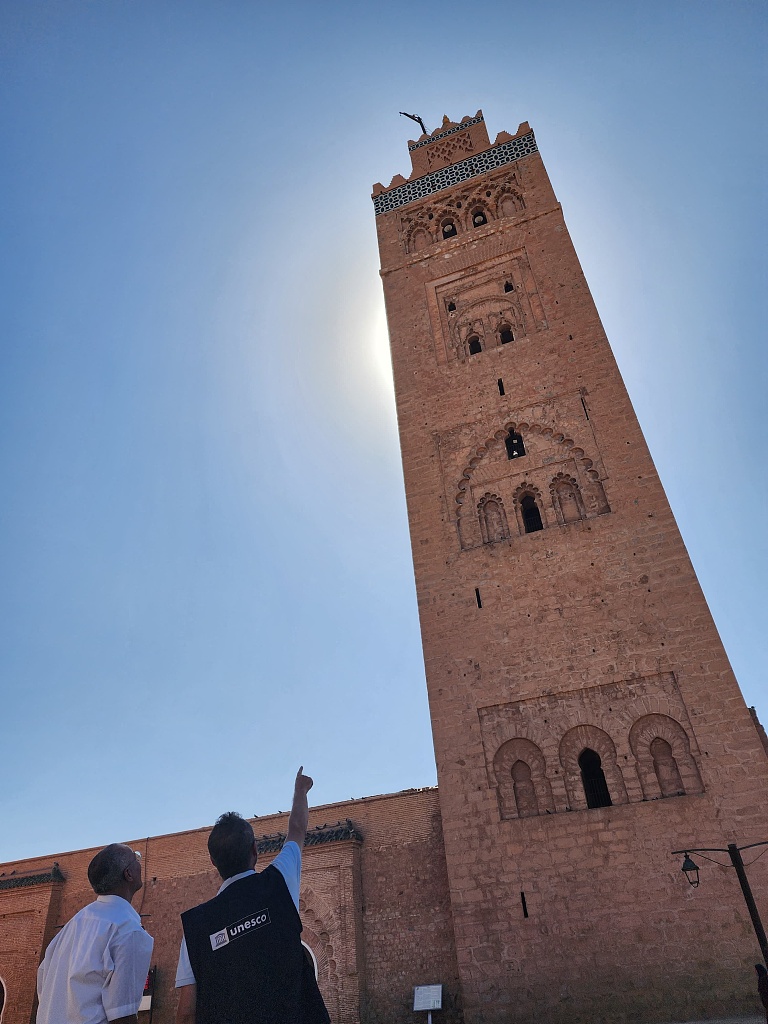
On September 9, 2023 local time, in Marrakech, Morocco, UNESCO representatives inspected the damaged ruins.
The minaret of the Kharbouch mosque in Jemaa Avna Square was almost completely destroyed.
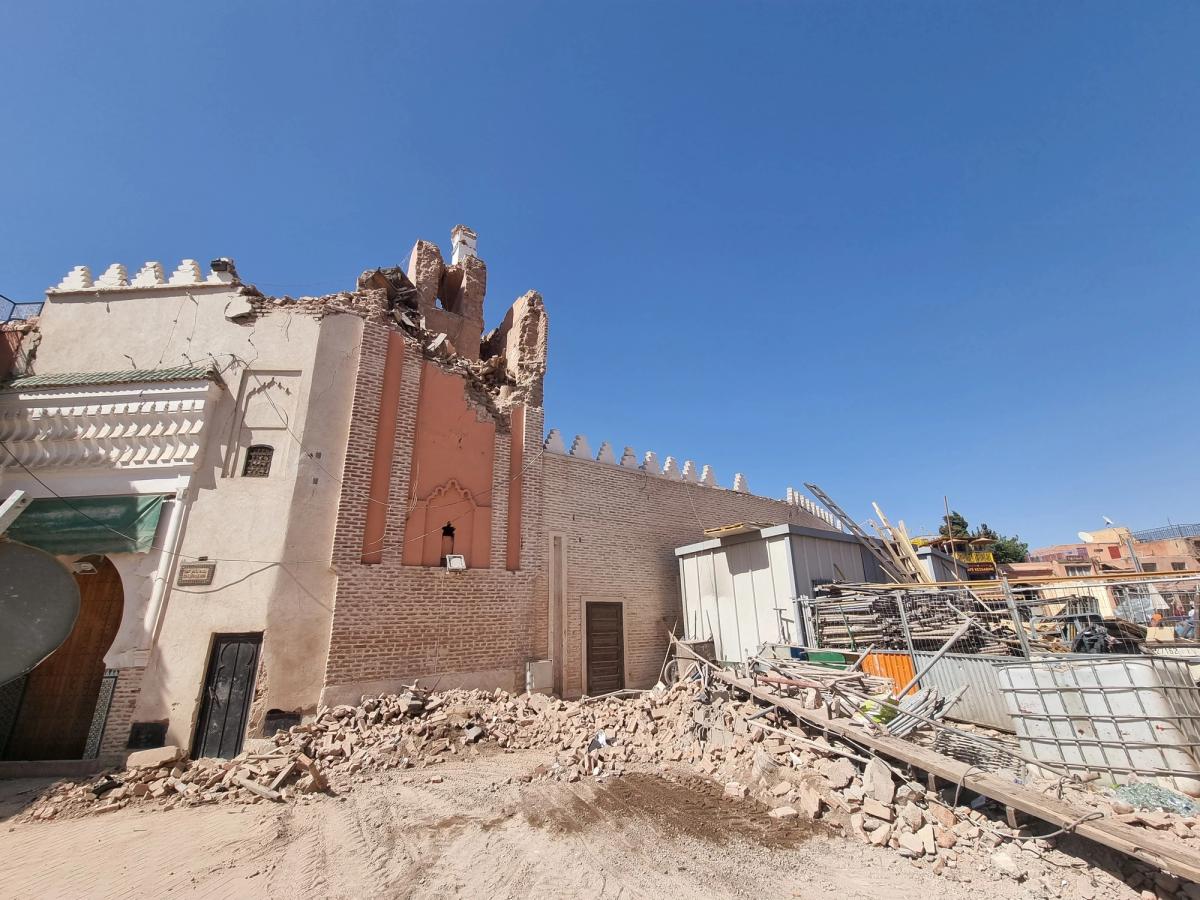
The minaret of the Kalbuch Mosque near Jamafna Square in Marrakech, Morocco, was damaged after the earthquake. Picture: UNESCO
The walls of the ancient city were also damaged, and Mellah, a historic Jewish settlement, was also damaged by the earthquake.
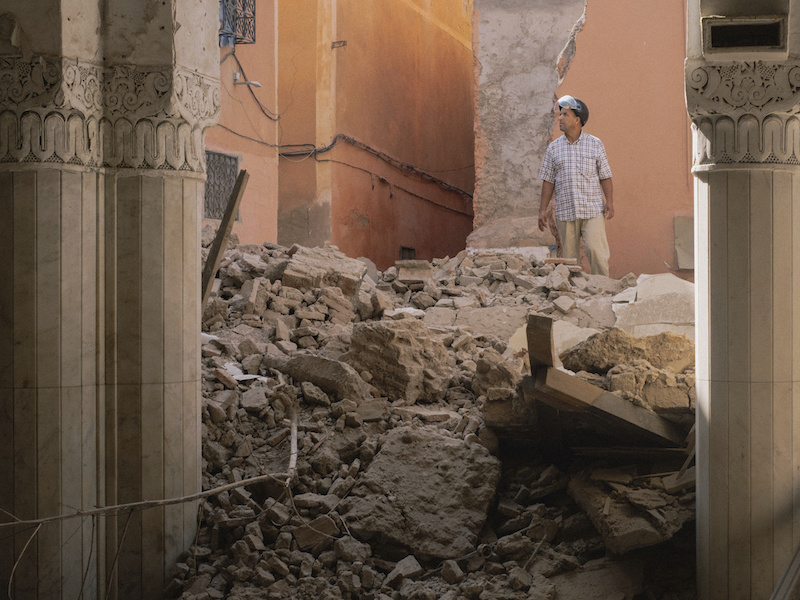
Destroyed Jewish Quarter of Marrakech
Not only were the monuments in Marrakech damaged by the earthquake, but monuments in surrounding areas were not spared either.
The Ksar of Ait-Ben-Haddou, located in Ouarzazate province, was built in the 17th century and became a World Cultural Heritage in 1987. It has been severely damaged by the earthquake. This is an ancient village from the pre-Saharan era and a typical Moroccan residence.

Picture of the village of Ait Ben Hadugou before the earthquake: UNESCO
The fantastic fortified architecture of the village of Ait Ben Haddou is a popular filming location for movies. The movie "Lawrence of Arabia" and the TV series "Game of Thrones" were filmed here.

The village of Ait Ben Haddou in Game of Thrones
The Tinmal Mosque in the Atlas Mountains adjacent to the epicenter was almost completely destroyed.

Tinmel Mosque destroyed by earthquake
The Timmele Mosque is a landmark building of the Almoravid Dynasty in Morocco. It was included in the pending list of World Cultural Heritage in 1995.

Above: On September 11, 2023, local time, Tinmer Mosque was severely damaged after the earthquake in Tinmer, Morocco.
Pictured below: Tinmer Mosque before the earthquake
Morocco is located at the junction of two continents, connecting tectonic plates, and is an earthquake-prone place. This spring, a major earthquake occurred in Turkey, at the junction of Europe and Asia. In autumn, Morocco, at the junction of Europe and Africa, was also hit by a once-in-a-century geological disaster.
between ocean and desert
Morocco, jointly built by European and African civilizations, can be called the "Greece of North Africa", integrating the Berber, Saharan, and Maghreb civilizations of Africa, as well as the European cultures of Portugal, Spain, and France. In addition to Asia's Islamic, Arab, and Jewish civilizations, Morocco's architecture, courtyards, and gardens also have traces of ancient Persia and the Mughal Empire in India.

Matisse's "Zola on the Terrace" and "Landscape from the Window" painted in Morocco in 1913
At the beginning of the 14th century, the Moroccan Islamic scholar Ibn Battuta set out from Tangier, Morocco, and headed east along the Mediterranean coast of North Africa, entering the Arabian Peninsula, the Ilkhanate, the Golden Horde, the Delhi Sultanate, and even China. He was the earliest One of the oriental travelers who practiced world travel, time and space intersected with the Chinese traveler Zheng He's journey to the West.
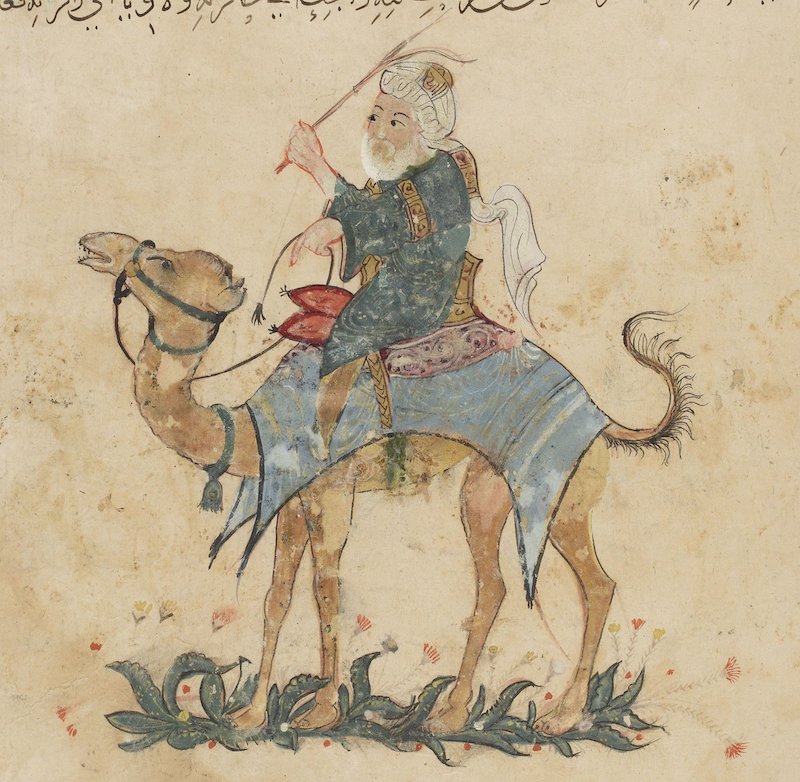
Ibn Battuta
Morocco is the African country closest to Europe. It is only separated from Spain by the Strait of Gibraltar. It has been merged with Spain and Portugal for more than 700 years. In Europe, Muslims from Morocco are called Moors. In 711, the Moors merged Spain and Portugal into the Islamic Empire. Iberia during the Muslim rule was also called Al-Andalus. After a long period of restoration of lost land, the Moors withdrew from Europe in 1492.
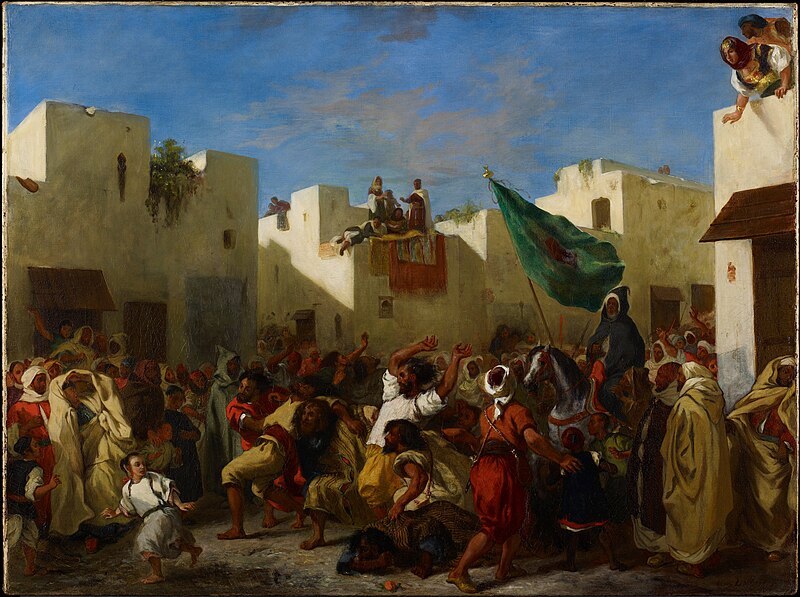
French painter Eugène Delacroix's 1837 oil painting "The Fanatics of Tangier"
Moroccan art is a mixture of Africa and Europe. The former King of Morocco, Hassan II, had a metaphor about trees: "Morocco is a big tree with roots in Africa, but its leaves breathe European air."

gate of fes

The ancient city of Dutou. Photo: UNESCO
A total of 9 monuments in Morocco are listed as World Cultural Heritage, including the ancient city of Fes Medina, the ancient city of Marrakech Medina, the historical city of Meknes, the fortified village of Ait Ben Haddou, and Volubili. The archaeological sites of St. Petersburg, the Medina of Totowan, the Medina of Essaouira, the old Portuguese city of Mazagan and the city of Rabat.

Chefchaouen, known as the Blue City Photo: Get Your Guide
The sloping territory of Morocco in the northwest corner of Africa can be roughly divided into three parts, namely the coastal zone, the inland zone and the desert zone.
The coastal zone is a seaport adjacent to the Atlantic Ocean and the Mediterranean Sea. It has a Mediterranean style, with blue buildings and planting of bougainvillea, palms and olives. It has a similar temperament to Greece or Spain. The coastal zone is deeply influenced by Europe and is the window for Portugal, Spain, and France to enter Morocco, including Tangier and Chefchaouen, which were once Spanish and Portuguese colonies in the north, and the former French colonies of Casablanca and Rabat on the Atlantic coast.

Movie "Casablanca"
The Medina of Tétouan, which was listed as a World Cultural Heritage in 1997, is located in Tangier. Since the 8th century, Duitouwan has been an important road connecting Morocco and Andalusia. It was destroyed in the 15th century. After the restoration movement of lost land, the refugees expelled by Spain came here and rebuilt today's ancient city on the ruins.
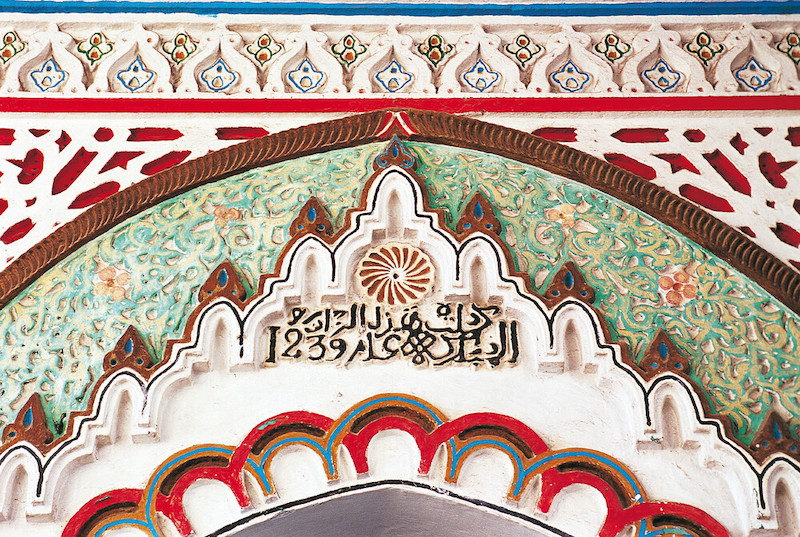
Islamic patterns in the ancient city of Duitouwan Photo: UNESCO
The Medina of Essaouira was included in the World Cultural Heritage in 2001 and was rebuilt from the ruins. At the end of the 18th century, the rulers of the Alawi dynasty developed Essaouira into a defensive port in North Africa, modeled after European castles.
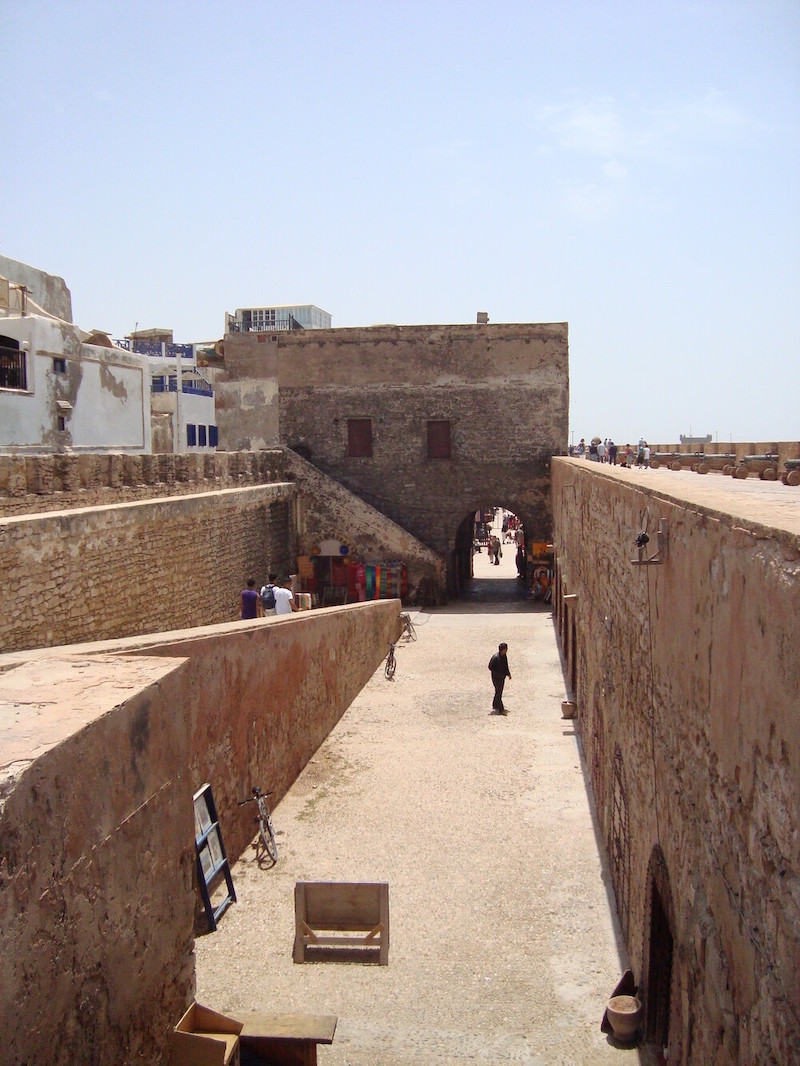
Essaouira Bunker Photo: UNESCO
The Portuguese Old City of Mazagan (Mazagan) is an Atlantic seaside colony built by the Portuguese in the 16th century. Portugal is the ancestor of mankind's great geographical discoveries, and Morocco is the earliest destination of Portugal's ocean exploration. It still retains Portuguese military fortresses and Catholic buildings.
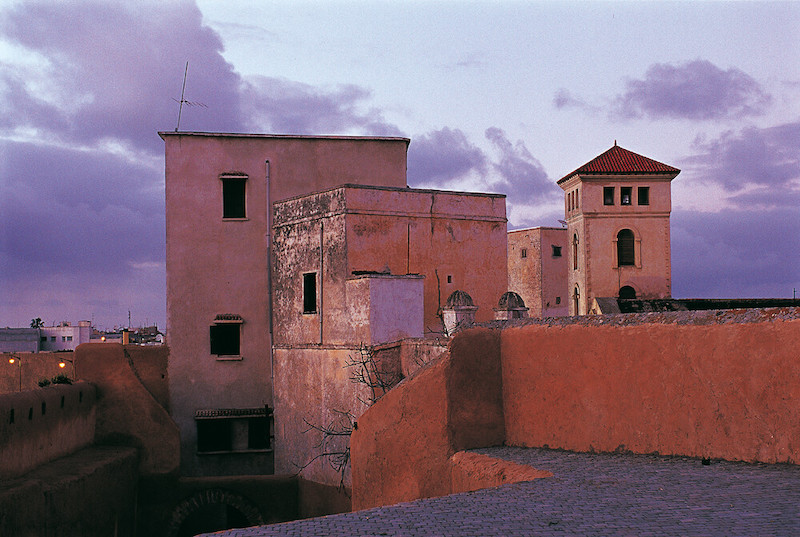
Mazagan Old City Photo: UNESCO
Advancing inland from the coast, you enter Morocco’s second level of geography, the inland zone. The inland zone is located at the foot of the Atlas Mountains and is isolated from the Sahara Desert. It is the soil of Moroccan civilization. Marrakech, Fes, Metnes and the capital Rabat constitute the four imperial cities. The ocher red city walls and earthen buildings constitute the This red zone.
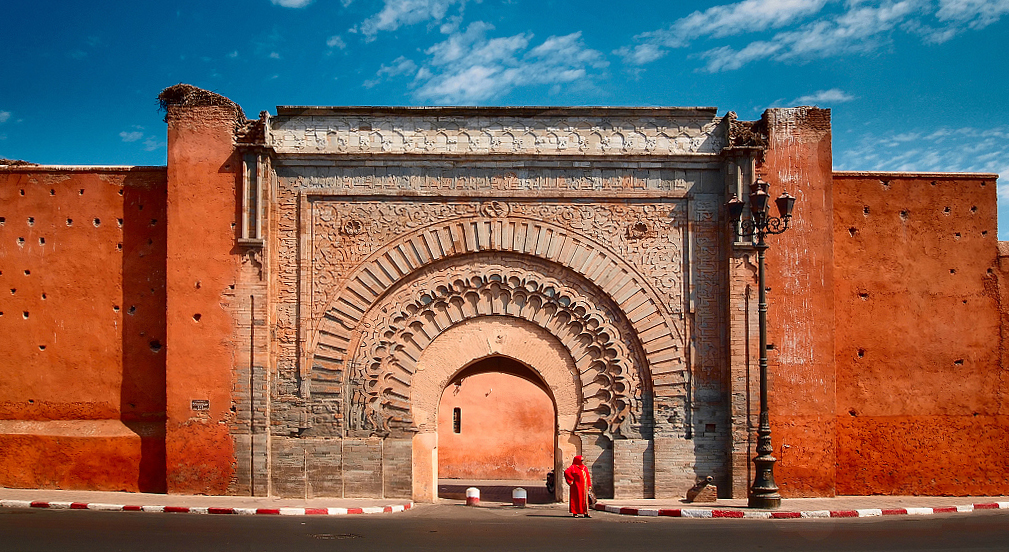
Marrakech Bab Agnaou Gate
In Berber language, Marrakech means "the hometown of God" and in Arabic it means "red". It retains the ocher-red ancient city of Medina (Medina) built in the 11th century. "Medina" follows the three Islamic names. The name of Medina in Arabia, one of the great holy cities, means "City of the Prophet" and is the place of Islamic enlightenment in North Africa.

Ben Youssef Madrasa in Marrakech
The Almoravid Mosque Dome (Almoravid Qubba) is the most beautiful piece of Islamic art in Marrakech and is the only Almourabit dynasty building that has survived to this day. The octagonal dome and the intricate carvings inside resemble hand-carved walnuts, with blooming petals, overlapping lotuses, gourds and four-leaf clovers.

Appearance of Al-Murabit Mosque Picture: wiki

Interior view of the dome of Al-Murabit Mosque: wiki
The cultural treasures of Morocco always seem to be inseparable from the ruins. The Al-Murabit Mosque was not discovered in the ruins until 1947. Due to the collapse of the terrain, the entire building sank 7-8 meters below the surface. French archaeologists renovated it to form what it looks like today.

Qalouin Mosque in Fes
With the rise of the Marin Sultanate in the 13th century, Marrakesh was replaced by the new capital Fez. Fes was built in the 9th century and houses the world's oldest university, al-Qarawiyyin. It was the center of Muslim education in the Middle Ages and is still the capital of Morocco's imperial city and cultural center.

Fez Islamic Decorative Art Photo: UNESCO
Morocco's current royal family, the Alawi dynasty, has ruled for more than 300 years. The ancient city of Meknes was built by the Alawi dynasty and became the capital in the 17th century. This ancient city, which mixes Spanish and Moorish styles, combines the African-Islamic style of the Maghreb period with European style. It was listed as a World Cultural Heritage in 1996.
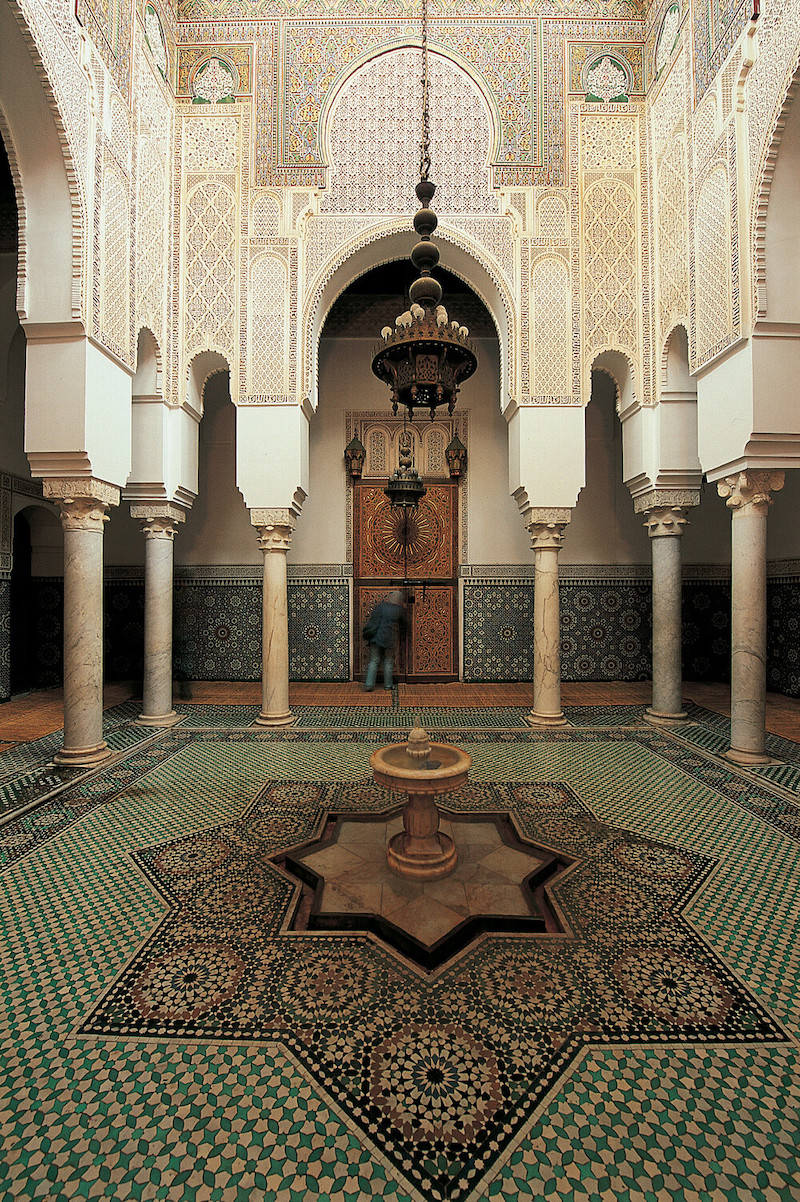
Islamic courtyard in Meknes Photo: UNESCO
The capital, Rabat, was included in the World Cultural Heritage in 2012. UNESCO evaluates Rabat as "a common heritage that is compatible with both the modern capital and the historical city." It is compatible with the first and second layers of Morocco's geography. The ocean and the inland imperial city coexist, and it is both a feudal imperial city and a European style on the Atlantic coast. port. The old town was built in the 12th century, and the new town was built in 1912 during the French colonial period.

Rabat’s Islamic-style city gate Photo: UNESCO
In 1920, American writer Edith Wharton wrote in "Travel in Morocco": "The wonderful thing about exploring Morocco lies between the familiar Tangier and the huge unknown." After the end of World War I, Edith Wharton visited the Sahara Desert, Morocco's third geography—the innermost yellow texture.
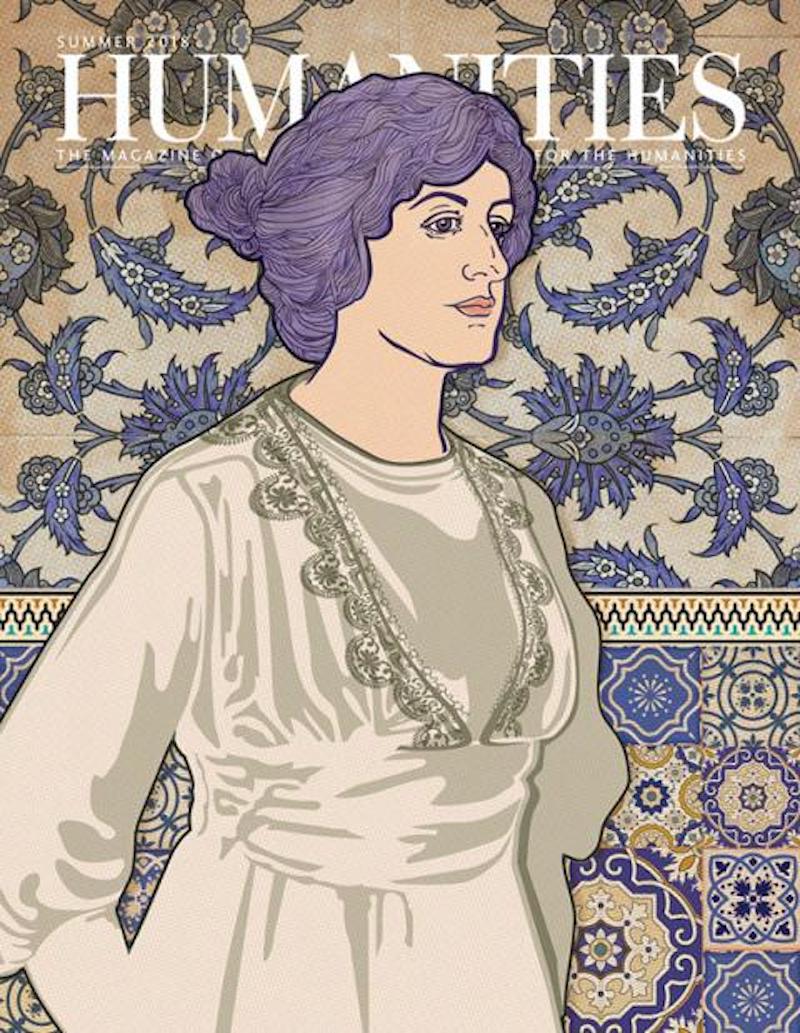
Edith Wharton, who wrote Travels in Morocco
The desert is the root of Moroccan civilization. As desert nomads, the Berbers forged an incredible civilization in the wilderness, and the village of Ait Ben Haddou was born here.
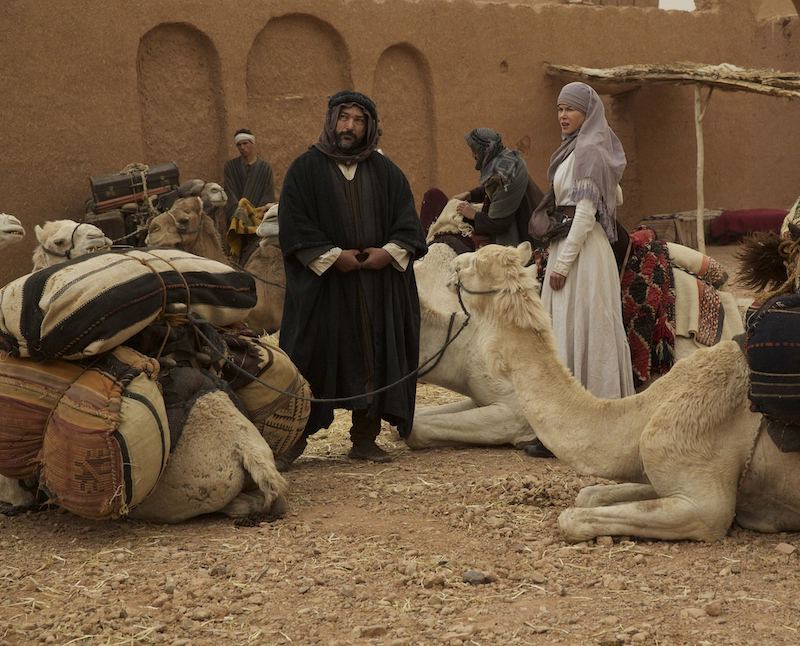
Biopic about British explorer Gertrude Bell, Queen of the Desert, shot in the Moroccan desert
Under the Sahara Starry Sky: Blue Gate and Red Siege
During World War II, there was a pilot who could not find anyone to talk to in the adult world. In the Sahara Desert, he met a mysterious little prince from an alien planet and told each other stories and secrets about another planet. When the little prince left the earth, the pilot left behind felt very lost. The French children's literature "The Little Prince" is inspired by the Sahara Desert. The protagonist is the author Saint-Exupéry himself. As a pilot, Saint-Exupéry came to French Morocco after the fall of France during World War II.

Stills from the animation "The Little Prince"
Morocco was once synonymous with the land of the free, an oasis between world wars. This was true for Edith Wharton who came here after the First World War, this was true for Saint-Exupéry who came here during the Second World War, and so was the lovers in the movie "Casablanca". The exquisite and complicated ancient Arab city here is the best defensive barrier. The blue city gate like a peacock spreading its wings and the exquisite Islamic reliefs can always bring people from the real world into the dream space and step into the blue door. He fell into a deep dream and fell into an ocher dream.
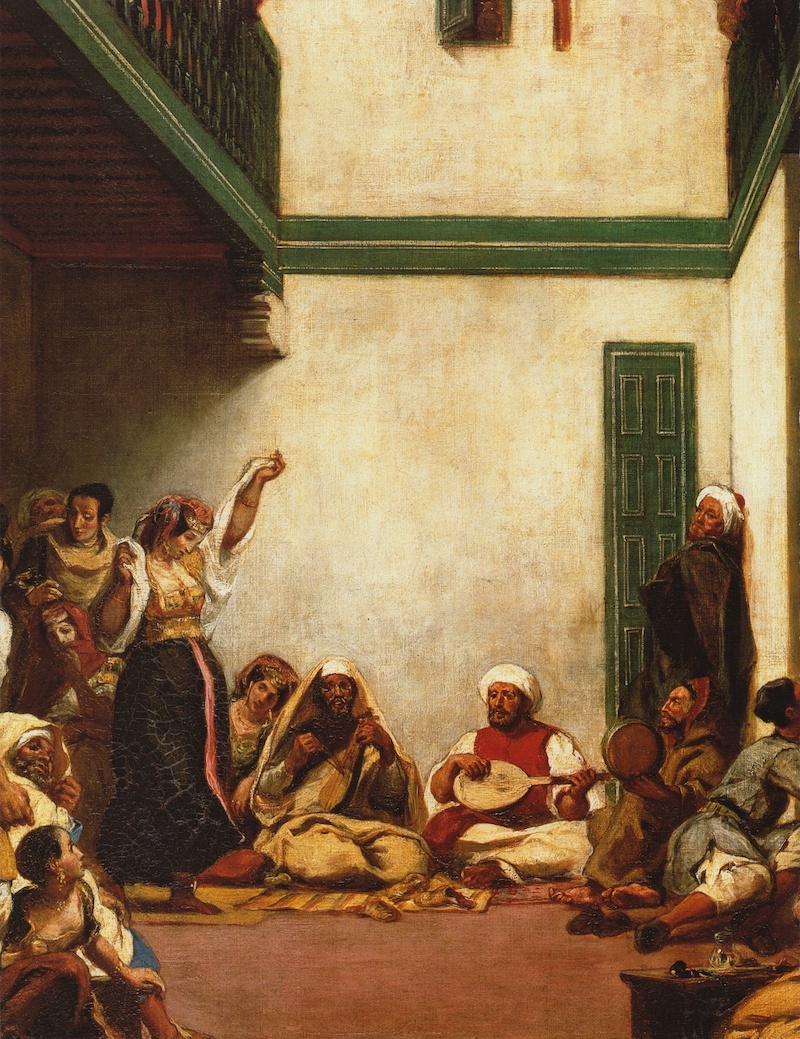
Eugène Delacroix, "The Wedding of the Moroccan Jews", 1837-1841
Morocco is unique in that it is the only North African country that was not conquered by the Ottoman Empire. It is also a rare Muslim country that treats Jews with tolerance and retains many Jewish historical sites. After the Reconquista, Jews fled from Spain and Portugal to Morocco and became the Sephardi branch of Jews. They survived the Holocaust of Jews in Europe during World War II and were the first to go to Israel.
Marrakech is also an oasis in the spiritual desert. The talented fashion designer Eve Saint Laurent regards Marrakech as her second hometown. Saint Laurent was born in French Algeria. She lost her home due to the Algerian War and felt repressed in Paris's gay-exclusion fashion circle, so she came to Marrakech is a peaceful and peaceful place that is most like home.

Yves Saint Laurent's Jardin Majorelle
Marrakech, which can be called a palace of aesthetics, gave Yves Saint Laurent abundant artistic inspiration. His clothing designs that absorbed North African and Arabic elements became a whirlwind in the fashion world.
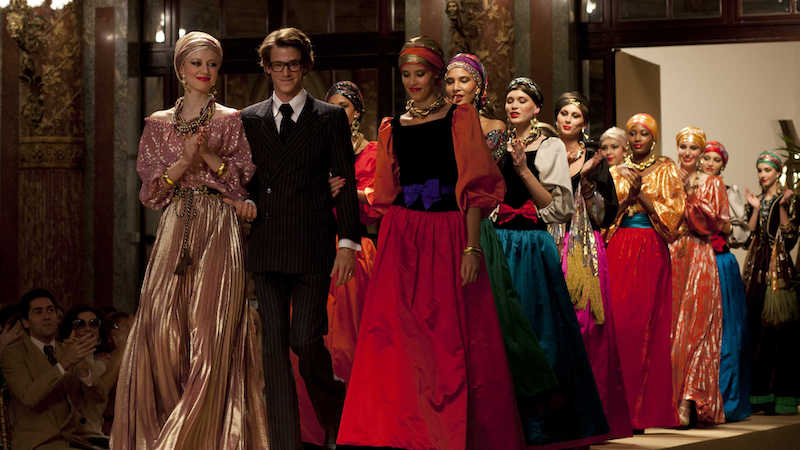
Eve Saint Laurent's Moroccan-inspired haute couture Picture: Stills from the movie "The Legend of Saint Laurent"
After the First World War, Sebastian, a young British aristocrat, came to Marrakech. Sébastien, troubled by his Catholic faith and homosexuality, recuperated in an Islamic monastery in Marrakech. The British novel Brideshead Revisited takes Marrakech as the setting for the story. The beautiful courtyard of the Islamic monastery and the columns patterned with the calligraphy of the Quran can be described as an ideal study for readers.
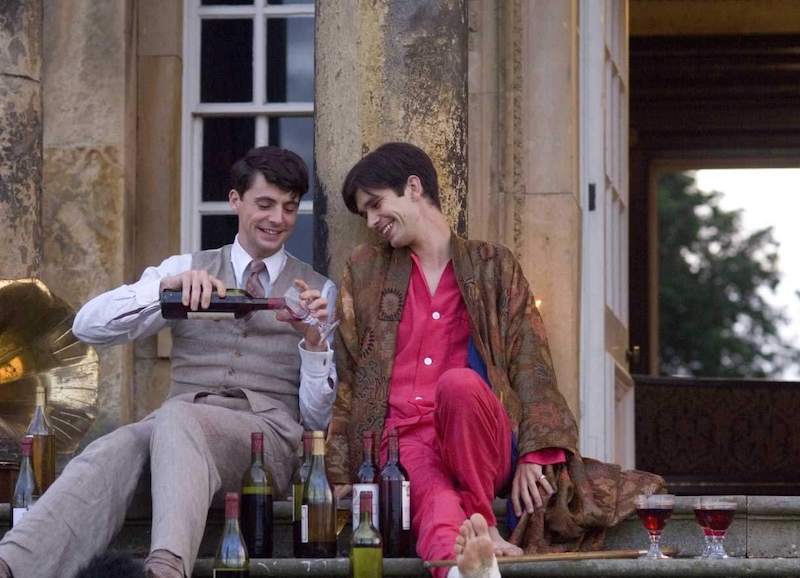
Stills from the movie Brideshead
Morocco under the Atlas Mountains has a pleasant climate and luxuriant flowers and trees. It is a cool land under the scorching sun. North African gardens run through it. Palms, date palms, orange trees, cacti and aloe vera are all covered in the gardens. It is like a fairyland surrounded by city walls.
The city walls and gates cut off outside invasion, and also formed a barrier. Both inside and outside the besieged city had their own worries.
"Everyone who comes to Casablanca is in trouble," says businessman Rick in the movie "Casablanca." Morocco is a French overseas territory that has not yet fallen to the Nazis. It is the gateway to a free America, but it is also full of undercurrents and conspiracies. "Casablanca is an ideal city where you can choose to die." Rick, caught between love and family and country, was ready to die at the moment of making a choice.
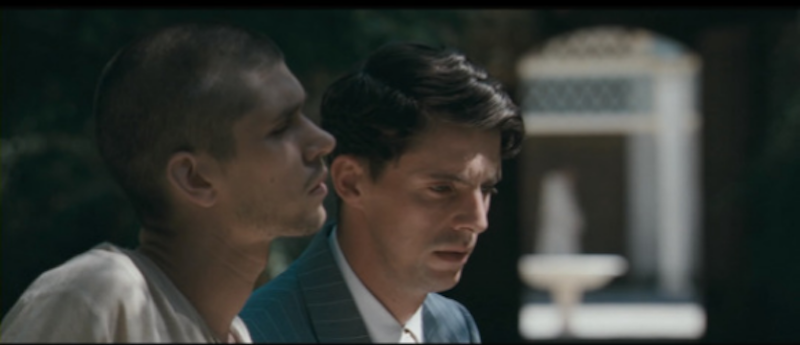
The Marrakech Monastery in the movie Brideshead
Sebastian, who longed to come to Marrakech to cultivate his body and soul, was not saved, and became more and more in a trance while taking psychotropic drugs. Eve Saint Laurent tried to relieve her loneliness in Marrakech, but was trapped in the mysterious world of love.
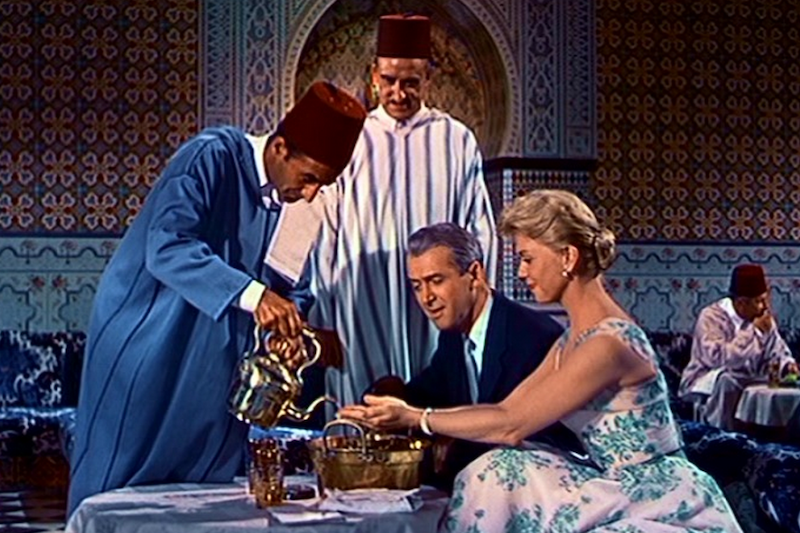
Morocco in the movie "To Kill a Murderer"
In the eyes of director Hitchcock, Morocco is a place with surging undercurrents, hidden beneath the bustling surface of a tourist resort. The thriller "To Catch a Murderer" takes place on a romantic vacation in Morocco, where hostages, kidnappings, assassinations and political conspiracies unfold, leaving every trace of fear.
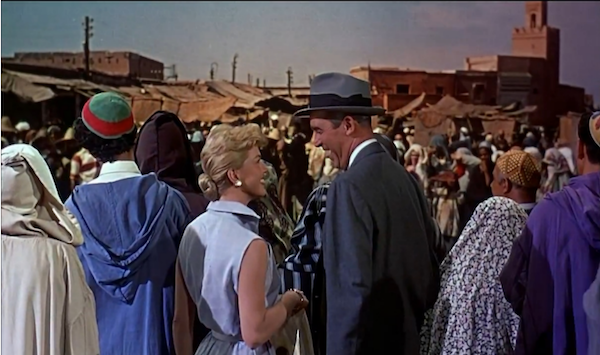
Stills from the movie "To Catch a Murderer"
A major earthquake occurred in Marrakech, a city crowded with tourists. Tourists were panicked. Cultural heritage that was already on the verge of disappearing was damaged by another natural disaster. But perhaps this is the reason why people today have a deep love for the preservation of historical sites. At a time when collapsing real estate companies, bloated civil engineering projects, and excess unfinished projects are emerging, those buildings created with technology, with careful design and strong intentions, quickly emerged and were abandoned in a short period of time, perfect and false. What we love more is the contingency that the passage of time gradually gives to things, and the imperfect remains on those ruins.
